When venturing into the wild, regardless of the reasons behind your journey, the need to cook becomes essential. Cooking in the wilderness presents its own unique set of challenges that require resourcefulness and adaptability.
Now, you don’t have to be a prepper or survivalist to learn how to cook in the wilderness, and here are some reasons why you should do it.
Being self-sufficient: When you’re in the great outdoors, cooking over a fire allows you to employ your own skills and use the resources you managed to gather. It empowers you to be self-sufficient, providing a sense of independence and accomplishment as you transform raw ingredients into nourishing and tasty meals.
Trying new things: Cooking in the wild offers a break from pre-packaged meals, and it allows you to explore new flavors and experiment with ingredients sourced locally. Not only can you discover how to prepare your food using various cooking methods, but you will also enhance your culinary experience by using wild edibles. Each dish becomes a testament to the unique environment you find yourself in, adding excitement and variety to your meals.
Challenges of nature: Cooking in the wild comes with its share of difficulties. Unpredictable weather conditions, limited resources, and unfamiliar cooking environments can test your adaptability. Wind and rain are common inconveniences in certain areas, and the absence of modern kitchen amenities can initially seem overwhelming. However, these challenges also add a sense of adventure and accomplishment to the cooking process while, at the same time, increasing your self-confidence.
You will learn to become versatile and flexible: To overcome the challenges of cooking in the wild, you must be versatile and flexible. Different cooking methods tailored to the environment may include open-fire cooking, using coals, or improvising cooking utensils from natural materials. Adapting to the surroundings and thinking creatively become crucial skills to succeed.
By embracing the necessity of cooking in the wild, you can not only satiate your hunger but also develop a deeper connection with nature. Through resourcefulness and adaptability, you’ll overcome obstacles and create memorable meals that enhance your wilderness experience and survival skills.
Now let’s look at the types of cooking you should try:
Frying
Frying food requires a different approach, and it can be a challenging endeavor. Your aim is to avoid flames and large coals that can disrupt the evenness of heat or lead to food burning. To achieve optimal frying conditions, it’s recommended to create a thin bed of coals by raking them away from the fire. Once you have a bed of coals, you can place a skillet directly on top. Alternatively, especially for quick meals, a fire fueled by kindling-sized sticks will provide the desired heat fairly quickly.
When frying meat, you should avoid excessive heat, as it can result in burning the grease or fat, leaving an unpleasant aftertaste on the meat. Carefully position the cooking vessel so as not to directly expose the food to the hottest part of the fire.
When your food has an excess of grease or lard available, frying directly in a pool of it can be an option. Simply heat the grease until it starts to bubble, then add small pieces of meat. Flip the meat once to ensure even frying. On the other hand, if you have a limited amount of grease, you should heat the pan on the coals and begin by frying the fattiest portions first.
If you plan on frying fish, avoid using or reusing fat/grease from other foods, as it will considerably change the flavor of the fish.
Roasting
Roasting meat is a classic cooking technique used by many campers. It involves placing the meat directly in the heat of the fire. However, to achieve optimal roasting results, you should position the meat above a bed of hot coals using a stick or fork. When I roast meat, I make a fire backing using either rocks or logs so that the heat is directed back onto the meat, thus assuring an even cooking of the meat.
To make sure you preserve the flavors and juices of tea meat, it’s recommended to sear it first over an open flame. When roasting meat on a stick or fork, it is advisable to turn it in 1/4-turn increments to ensure even cooking on all sides.
Baking
Baking is a versatile cooking technique that involves the use of a sealed container. This method offers various possibilities for incorporating additional ingredients, such as liquids. What sets baking apart from other cooking methods is its focus on creating a consistent and even distribution of heat around the food being cooked. In general, achieving this balance of heat is easily accomplished by using a Dutch oven.
When it comes to baking, I found that the choice of cookware plays a crucial role in ensuring even heat distribution. My choice for baking is cast-iron cookware since it offers excellent heat retention properties. The heavy and durable nature of cast iron helps to evenly distribute the heat throughout the cooking process, resulting in well-cooked and evenly baked dishes.
Using a sealed container helps you create a controlled environment that retains moisture and flavors within the dish. This not only allows the food to cook gently and evenly, but it also ensures optimal texture and taste.
Now, if you don’t want to carry a Dutch oven, you can use aluminum foil. You can wrap your food in aluminum foil, and you can more or less simulate the same enclosed cooking environment. It goes without saying that this alternative method requires practice and experience, and success is not always a guarantee.
Pan Broiling
Pan broiling is a versatile cooking method that offers a convenient alternative to traditional broiling over open flames. This technique involves using a shallow, covered pan to cook the meat, and it works best when the meat is turned frequently.
When you try this method, you need to preheat the pan over medium-high heat. It’s essential to select a pan that retains and distributes heat evenly to ensure uniform cooking. Once again, cast iron cookware is the preferred choice for many due to its excellent heat retention properties.
When choosing the meat for pan broiling, pick cuts of meat that are relatively thin and well-suited for quick cooking. The thinner cuts allow for efficient heat transfer, ensuring the meat cooks through without overcooking the exterior. Usually, fillets are ideal candidates for this method.
To achieve the best results, season the meat before placing it in the hot pan and use a light coating of oil. Oiling the meat prevents sticking and enhances browning. Place the meat in the hot pan and cook it on one side until a desirable crust forms, typically a few minutes. Then flip the meat and continue cooking on the other side. The frequent flipping helps distribute the heat evenly and prevents the meat from becoming too dry.
Rock Broiling
Rock broiling is a unique cooking method that utilizes natural rocks as a cooking surface. When engaging in rock broiling, it is essential to follow certain precautions and techniques to ensure a safe and successful cooking experience.
To begin, select two flat rocks that are free from any debris and not sourced from a moist or wet environment. If you use rocks that contain moisture, there is a real risk of those rocks exploding when heated. Place these rocks on top of each other within the coals, using additional rocks to create a structure resembling an oven. The purpose of this setup is to heat the rocks and create a stable cooking surface.
Prior to placing the rocks in the fire, it’s important to build the fire and allow it to burn until it turns into hot coals. Once the coals are ready, carefully position the rock oven in the center, making sure it is stable and secure. Any debris on the rocks should be wiped away to ensure a clean cooking surface.
To cook the meat using the rock broiling method, place it between the heated rocks. The rocks act as a source of heat, creating an environment that allows the meat to cook evenly and develop desirable flavors.
The key to successful rock broiling, similar to any other cooking method, is to contain and maintain the heat, ensuring it stays focused on the food. The rocks act as a barrier that helps retain and direct the heat to the meat, ensuring efficient cooking.
Braising
Braising is a highly effective method for tenderizing tough cuts of meat, and many say it is a combination between frying and baking. To begin the braising process, take a shallow pan that can be covered and pour approximately 2 inches of water into it (if available, you can add some fresh vegetables). Then, place the meat into the pan, cover it, and commence cooking over a bed of hot coals.
The general guideline for braising is to cook the meat for about 15 minutes per pound. This slow and gentle cooking method allows the meat to gradually tenderize, resulting in a deliciously moist and flavorful outcome. As the cooking progresses, the water in the pan will generate steam, creating a moist environment that aids in breaking down the toughness of the meat.
The beauty of braising is that it not only tenderizes tough cuts of meat but also imparts delightful flavors from the accompanying vegetables and seasonings. The slow, moist cooking method transforms the meat into a tender, succulent dish.
Boiling
Boiling is a simple and efficient cooking method that requires a reliable pot or bucket or pretty much any other container you have available. The shape of the container can influence the boiling process, with wider and shorter pots heating up faster due to their increased surface area exposed to the fire.
When boiling meat, it is important to consider the desired outcome. For stews and soups, adding fresh meat to already boiling water is recommended. This allows the meat to slowly heat up, gradually releasing its flavors into the surrounding liquid. On the other hand, if you intend to cook and consume the meat as-is, it is advisable to add it to the boiling water for a brief period of approximately 5 minutes. This quick boil helps lock in the meat’s juices before removing it from the water and proceeding with regular cooking above the fire.
To ensure that boiled meat reaches the desired level of tenderness, continue boiling it until it easily separates from the bone. For tougher cuts of meat, the addition of a few tablespoons of vinegar can help tenderize it. As the boiling process nears completion, it is best to season the meat a few minutes before it is done, allowing the flavors to infuse and enhance the overall taste.
If you prefer a thicker soup consistency, you can simmer it after the initial boiling process for about 30 minutes. During this simmering phase, consider adding instant potatoes or biscuit mix, stirring frequently to ensure proper incorporation and prevent lumps.
Steaming
Steaming is a fantastic cooking method that utilizes hot moisture to cook food, and it’s oftentimes my preferred method for cooking vegetables and fish in the wilderness. While a dedicated steamer is often preferable, it is possible to achieve steaming even in a campfire setting. Here’s how to do it:
Start by placing several dry stones in your campfire and allow them to heat up until they turn red-hot. Next, dig a hole large enough to accommodate the stones along with the food you intend to steam. Ensure there is enough space around the stones for insulation. Position the steaming chamber close to the fire for efficient heat transfer.
Carefully place the hot stones into the hole and cover them with a thin layer of wet grass or leaves. Then, arrange your food on top of this layer, ensuring it is evenly distributed. Add another layer of wet leaves and grass to cover the food. Finally, fill the hole with loose earth, creating a sealed chamber.
To facilitate the steaming process, poke a hole in the top of the sealed chamber, ensuring it reaches the level of the food. Pour some water into the hole, and immediately plug the hole to prevent the steam from escaping. This traps the released steam within the chamber, creating the ideal environment for steaming the food.
Concluding
So, there you have it, a few reliable methods to cook food in the wilderness. Some of these may sound simple enough, while others may seem like a complicated endeavor. What I can tell you from experience is that you will only figure out what works for you after you’ve tried the cooking methods a dozen times. There can be a lot of trial and error for beginners when cooking in the outdoors, especially if they lack common cooking amenities, but once you succeed in preparing a meal using “primitive” methods, I swear the food will taste better than anything you’ve eaten before.


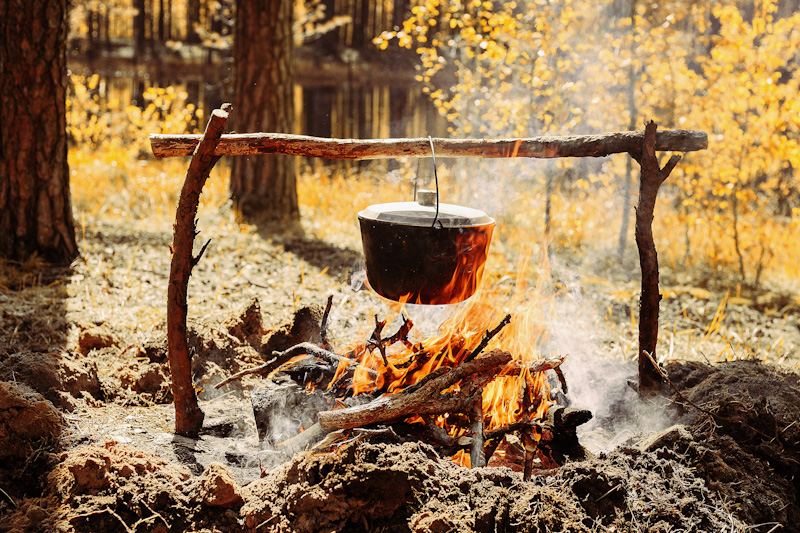


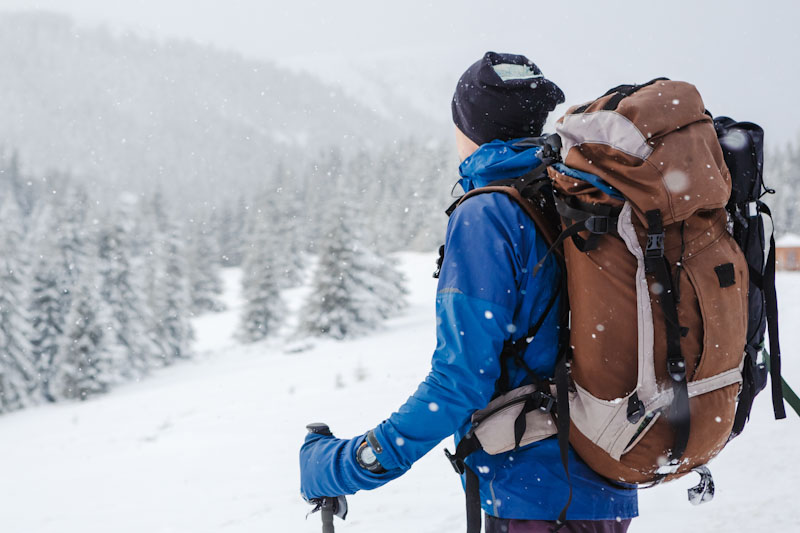
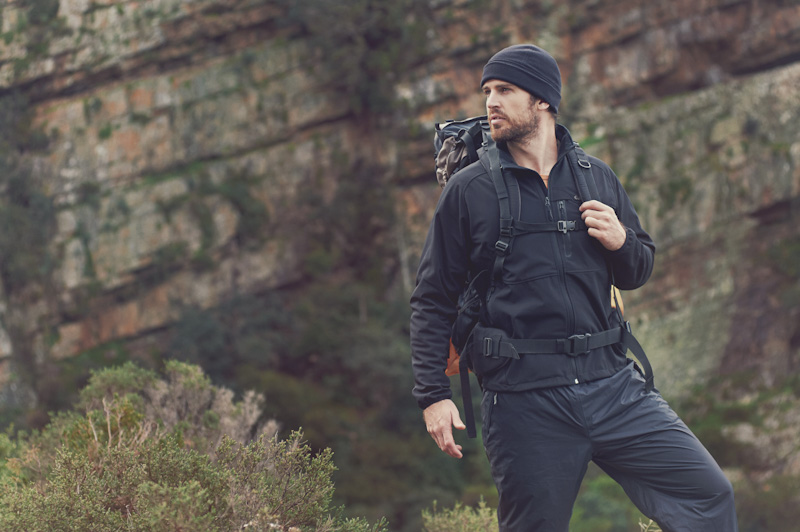
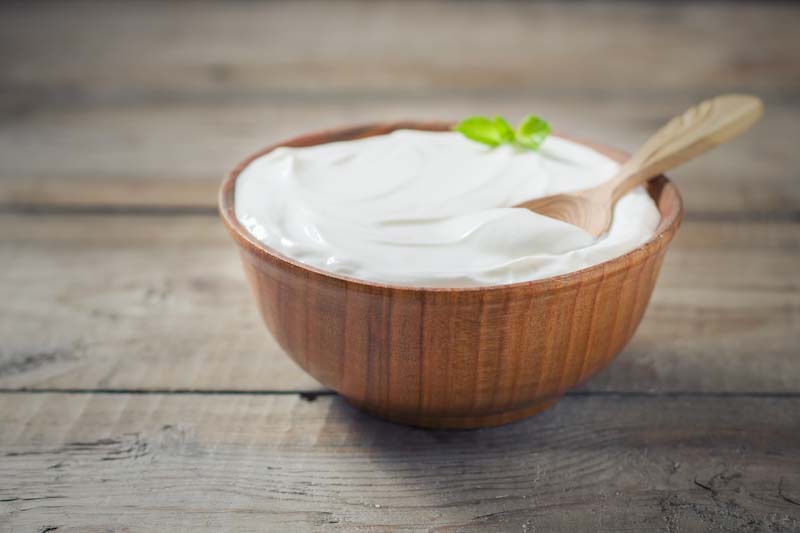
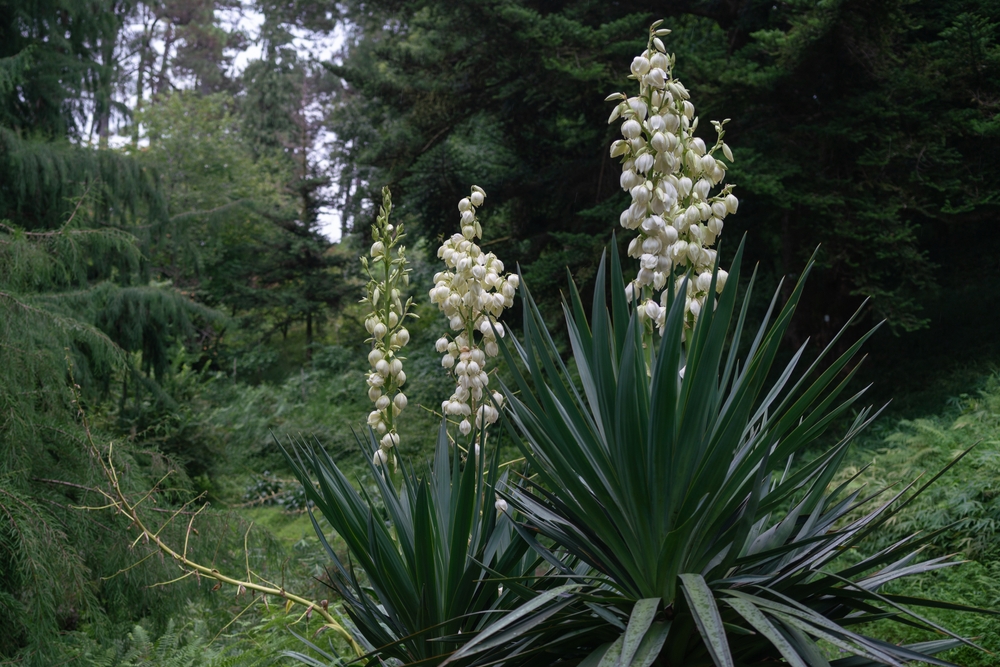

Helen | October 12, 2023
|
Is ANYONE here eating raw fish?
Katy | October 12, 2023
|
Nature truly provides if you know how to harness its resources. The best thing is that you DON’T NEED GUNS! When will you guys realize that?
mario games | April 4, 2024
|
I really like raw fish sushi!
Jackie Rodzinski | April 25, 2024
|
I wonder that if, in the survival situation frying is the best use of limited resources, i.e. oil. However, I have never heard of rock broiling and the idea sounds fascinating. I can’t wait to try it. Thank you very much. Many blessings, Jackie.